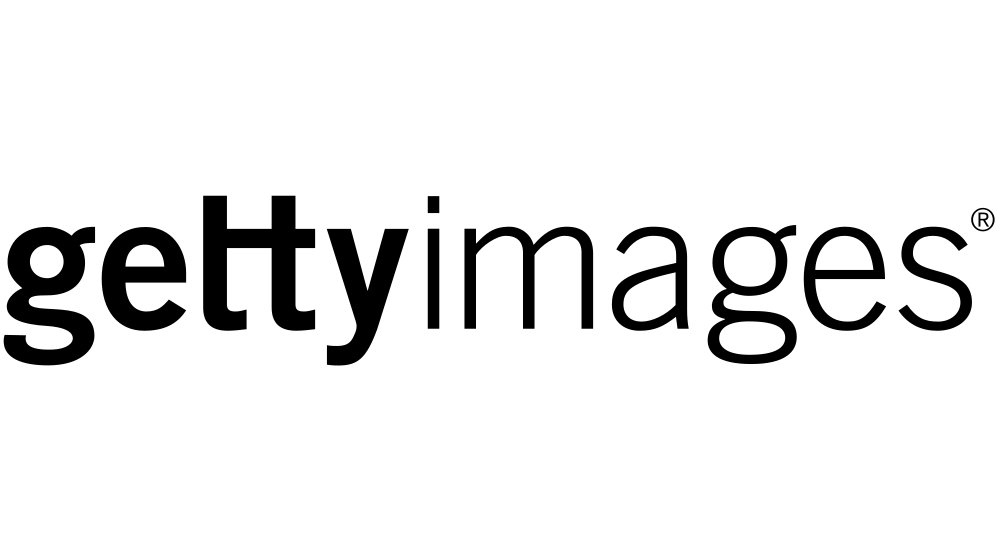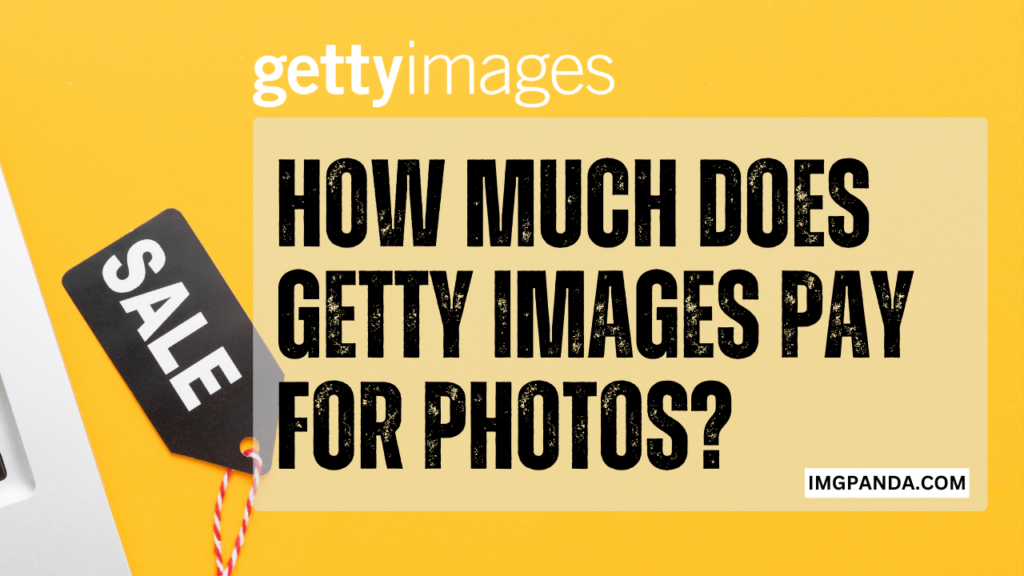Introduction
Getty Images, a leading stock photography agency, has become synonymous with high-quality visual content across various industries. As an essential resource for designers, marketers, and content creators, Getty Images provides a vast library of diverse images, videos, and illustrations that cater to a wide range of needs.
For photographers seeking to monetize their work and reach a global audience, contributing to Getty Images can be a lucrative opportunity. However, understanding how much Getty Images pays for photos is crucial for those looking to make an informed decision about their creative endeavors.
Also Read This: How to Stream Dailymotion Videos to Your Apple Devices Using AirPlay
How Getty Images Works
Getty Images operates as a global stock photography and media company, connecting photographers, videographers, and illustrators with buyers seeking visual content for various purposes. The company serves as a platform where creators can upload their work, and potential users, such as businesses, publishers, designers, and advertisers, can search for and license these images, videos, and illustrations for their projects.
1. Contributor Submissions:
Photographers and other visual content creators can apply to become contributors on the Getty Images platform. Once accepted, they gain the ability to upload their images, videos, or illustrations to the Getty Images website.
2. Content Review and Approval:
After submission, Getty Images' team of editors reviews each piece of content for quality, relevance, and adherence to their guidelines and legal requirements. This review process ensures that only high-quality and marketable content is made available to potential buyers.
3. Licensing Models:
Getty Images offers two primary licensing models for content: royalty-free and rights-managed.
a. Royalty-Free (RF) Licensing:
Under this model, buyers can license the content for a one-time fee, and they can use it multiple times for various purposes without paying additional royalties. Royalty-free images are typically more affordable but may have usage restrictions.
b. Rights-Managed (RM) Licensing:
In the rights-managed model, the licensing fee for each use of the content is determined based on specific criteria, such as the usage type, duration, geographic distribution, and exclusivity. This model offers more control over how the content is used, and the fees vary accordingly.
4. Usage Types and Rights:
Getty Images offers a wide range of usage types, including editorial use, commercial use, digital use, print use, and more. Each type comes with its own pricing and licensing terms, depending on factors like the size of the image, placement, and the intended audience.
5. Getty Images Website and Search:
The Getty Images website serves as the primary marketplace for buyers to browse and search for content based on keywords, categories, or themes. The site includes powerful search filters that help users find the most suitable content for their projects.
6. Licensing and Payment:
When a buyer selects an image or other media for their project, they go through the licensing process on the Getty Images website. Creators receive compensation based on the licensing model and the usage type selected by the buyer.
7. Exclusivity and Non-Exclusivity:
Photographers can choose to contribute exclusively to Getty Images, meaning they can't sell the same content through other platforms. Exclusivity may result in higher royalty rates but limits the ability to distribute the work elsewhere. Non-exclusive contributors retain the right to sell their work on multiple platforms.
In summary, Getty Images operates as an intermediary between content creators and users, offering a vast collection of high-quality visual content for a wide range of applications. By understanding the licensing models and factors that influence compensation rates, contributors can make informed decisions about their creative work and potential earnings on the platform.

Also Read This: Step by Step Guide to Making Ribbon Roses
Factors Affecting Compensation Rates
The compensation rates for photographers and content creators on Getty Images are influenced by several key factors. These factors determine how much photographers can earn for each licensed use of their images, videos, or illustrations.
| Factor | Description |
|---|---|
| Licensing Model | The chosen licensing model (Royalty-Free or Rights-Managed) can impact the compensation rates. |
| Usage Type and License Terms | Different usage types and license terms may result in varying pricing and compensation. |
| Image Resolution and Quality | Higher-resolution and high-quality content may command higher compensation rates. |
| Exclusivity | Exclusive contributors may receive higher royalty rates but have limitations on other platforms. |
| Market Demand and Trends | Compensation rates may be influenced by the demand for specific content and current trends. |
| Sales Volume and Performance | High-performing content with more downloads can lead to increased compensation. |
| Geographical Factors | Compensation rates may vary based on regional demand and pricing considerations. |
| Custom Contracts and Agreements | Negotiated agreements or special arrangements can impact individual compensation rates. |
Also Read This: How Telegram Generates Revenue Without Relying on Advertisements
Compensation Rates for Royalty-Free Photos
The compensation rates for royalty-free (RF) photos on Getty Images are based on a per-download or per-license model. When a buyer licenses an RF image, they pay a one-time fee to use the image multiple times without additional charges. The photographer, as the content creator, receives a percentage of the licensing fee as their compensation. However, the exact payment rates can vary depending on factors such as the contributor's experience, portfolio quality, and the buyer's subscription plan.
1. Contributor Levels:
Getty Images categorizes contributors into different levels based on their experience and sales performance. As contributors progress to higher levels, they may be eligible for increased compensation rates per license.
2. Exclusive and Non-Exclusive Rates:
Exclusive contributors, who only sell their work through Getty Images, may receive a higher percentage of the licensing fee compared to non-exclusive contributors. This serves as an incentive for contributors to maintain exclusivity with Getty Images.
3. Image Downloads and Sales Volume:
The number of times an image is downloaded or licensed can influence the compensation rate. Photographers with high-performing images that generate a substantial volume of downloads may receive higher royalties.
4. Subscription Plans:
Getty Images offers subscription plans to its buyers, allowing them to access a specific number of downloads within a certain period. Contributors may receive lower compensation rates for images downloaded through subscription plans due to the bulk purchasing nature of these plans.
5. Percentage Royalty:
The royalty percentage earned by photographers for each RF image license typically ranges from around 15% to 45% of the licensing fee. This percentage can vary based on the factors mentioned above and the contributor's overall sales performance.
6. Special Promotions and Featured Content:
Getty Images may run special promotions or feature specific content on its website, providing additional exposure to certain images. This exposure can lead to increased downloads and potentially higher earnings for the featured content.
7. Pricing Tiers:
Getty Images has pricing tiers for its RF content based on image size and resolution. The pricing tier selected by the buyer can affect the licensing fee and, consequently, the photographer's compensation.
Learn the secrets of making money by selling your photos on Getty Images. This comprehensive guide reveals valuable tips and strategies to optimize your earnings and turn your passion for photography into a profitable venture:
Also Read This: How to Find Saved Posts on LinkedIn Using a Simple Search Method
Compensation Rates for Rights-Managed Photos
Compensation rates for rights-managed (RM) photos on Getty Images are more variable compared to royalty-free (RF) photos. The pricing for RM images is based on several factors, including the specific usage rights granted to the buyer, the duration of use, the geographic distribution, and the exclusivity of the content. As a result, the compensation rates for RM photos can vary widely.
1. Customized Pricing:
Unlike RF photos, which have standardized pricing based on image size and resolution, RM photos have customized pricing for each use case. The licensing fee is negotiated based on the specific requirements of the buyer.
2. Usage Rights:
Buyers can select the specific usage rights they need for an RM photo. This can include options such as editorial use, commercial use, exclusive use, and more. The licensing fee increases as the scope and exclusivity of the usage rights expand.
3. Duration and Distribution:
The length of time the buyer intends to use the image and the geographic distribution of the content can also influence the compensation rate. Longer durations and wider distribution rights often result in higher licensing fees.
4. Exclusivity:
Buyers can opt for exclusive rights to an RM photo, meaning that no other entity can use the same image for the specified duration and purpose. Exclusivity can significantly increase the licensing fee and, consequently, the photographer's compensation.
5. Negotiated Agreements:
RM photos are often part of custom agreements between the photographer and the buyer. The compensation rate is subject to negotiation and is based on factors such as the uniqueness of the content and the buyer's specific needs.
6. Market Demand:
The demand for certain types of RM content can impact the compensation rates. High-demand and niche content may command higher fees due to its commercial value.
7. Photographer's Reputation:
Established photographers with a strong reputation in the industry may have more leverage in negotiating higher licensing fees for their RM photos.
🔸Top Tips for Contributors from Getty Images’ Creative Team🔸
Learn more about joining our creative community: https://t.co/KB4pthSVY8 pic.twitter.com/v66uwKc7gB
— Getty Images VisualGPS (@GettyCreativity) July 25, 2023
Also Read This: Get Free Hoagies at Wawa Today with YouTube Promotions
Exclusive vs. Non-Exclusive Contributor Payments
Exclusive and non-exclusive contributor payments on Getty Images differ based on the exclusivity status of the content and the terms of the contributor agreement.
1. Exclusive Contributors:
- Exclusive contributors are photographers or content creators who agree to sell their work exclusively through Getty Images. This means they cannot sell the same content through other stock photography agencies or platforms.
- In return for exclusivity, Getty Images often offers higher royalty percentages to exclusive contributors. These higher percentages serve as an incentive for photographers to provide unique and high-quality content that is only available on Getty Images.
- The exact royalty percentage varies depending on the contributor's level, sales performance, and the licensing model (RF or RM).
- Exclusive contributors may also have the opportunity to participate in special promotions and featured collections, which can lead to increased exposure and potential higher earnings.
2. Non-Exclusive Contributors:
- Non-exclusive contributors have the freedom to sell their work on multiple stock photography platforms or through their own channels.
- As non-exclusive contributors do not grant exclusivity to Getty Images, they typically receive a lower royalty percentage compared to exclusive contributors. This is because Getty Images may have less control over the distribution and licensing of the content, which can affect the commercial value of the images.
- Non-exclusive contributors may receive lower royalty rates, but they have the advantage of diversifying their income streams by selling their work through other platforms as well.
[caption id="attachment_190035" align="alignnone" width="1500"] Exclusive vs. Non-Exclusive Contributor Payments[/caption]
Exclusive vs. Non-Exclusive Contributor Payments[/caption]
Also Read This: Manage Your Budget with Canva Budget Template
Payment Process and Payout Thresholds
The payment process and payout thresholds for Getty Images contributors are essential aspects to understand, as they dictate when and how photographers receive their earnings.
1. Earnings and Payment Schedule:
- Getty Images typically calculates and tallies contributors' earnings on a monthly basis. At the end of each month, the earnings for the content licensed during that month are calculated.
- It's important to note that there is often a time delay between the content's licensing and the actual payment. The payment schedule may vary based on the contributor's location and the payment method chosen.
2. Payout Thresholds:
- Payout thresholds refer to the minimum amount of earnings a contributor must accumulate before they are eligible for a payment.
- Getty Images may have different payout thresholds for different payment methods or currencies. For example, the payout threshold might be different for contributors who choose PayPal as their payment method compared to those who opt for direct bank transfers.
- Payout thresholds help ensure that transaction fees and administrative costs are kept manageable for both the contributor and the platform.
3. Payment Methods:
- Getty Images offers various payment methods to contributors, depending on their location and other factors. Common payment methods include PayPal, direct bank transfers (ACH), or wire transfers.
- Contributors can choose the payment method that best suits their preferences and convenience.
4. Tax Forms and Compliance:
- As with any form of income, contributors to Getty Images are responsible for reporting their earnings and complying with relevant tax regulations in their respective countries.
- Getty Images may require contributors to provide tax-related information, such as W-8 or W-9 forms, depending on their location and tax status.
5. International Payments:
- For contributors outside the United States, the payment process may involve currency conversion and international transaction fees, depending on the payment method chosen.
- Getty Images may use payment processors or financial institutions to facilitate international payments, and associated fees may apply.
[caption id="attachment_190036" align="alignnone" width="1500"] Payment Process and Payout Thresholds[/caption]
Payment Process and Payout Thresholds[/caption]
Also Read This: Creating Stunning PowerPoint Presentations with VectorStock Graphics
Tips for Maximizing Earnings on Getty Images
Maximizing earnings on Getty Images requires strategic planning, a focus on quality, and understanding the preferences of the stock photography market.
1. High-Quality Content: Submit only your best and highest quality work. Images and videos with excellent composition, sharpness, and lighting have a better chance of being accepted and attracting buyers.
2. Diverse Portfolio: Build a diverse portfolio with a wide range of subjects, styles, and themes. This appeals to a broader audience and increases the likelihood of meeting specific buyer needs.
3. Keywording and Metadata: Accurate and relevant keywords and metadata improve the discoverability of your content. Use descriptive tags that accurately represent the content to help buyers find your images.
4. Model and Property Releases: Ensure that you have valid model and property releases for images with recognizable people or private properties. This makes your content suitable for commercial use and broadens its appeal.
5. Focus on Unique Content: Offer unique and creative visuals that stand out from the competition. Buyers are often looking for fresh perspectives and original content.
6. Consistency and Regular Uploads: Consistently upload new content to your portfolio. Regular uploads keep your profile active and increase the chances of attracting buyers.
7. Promote Your Portfolio: Share your portfolio on social media, personal websites, and blogs to drive traffic to your Getty Images profile. Increased exposure can lead to more downloads and sales.
[caption id="attachment_190039" align="alignnone" width="1500"] Tips for Maximizing Earnings on Getty Images[/caption]
Tips for Maximizing Earnings on Getty Images[/caption]
Also Read This: Is Dailymotion Safe from Viruses in 2020 and How to Stay Protected
FAQ
1. How much does Getty Images pay for photos?
The compensation rates for photos on Getty Images can vary widely depending on factors such as the licensing model (royalty-free or rights-managed), the usage type, the image resolution and quality, exclusivity, contributor level, and the buyer's subscription plan. Royalty rates are typically a percentage of the licensing fee, which can range from 15% to 45% or more, depending on the specific factors involved.
2. What factors influence the payment rates for Getty Images contributors?
Several factors affect the payment rates for Getty Images contributors. These include the licensing model chosen by the buyer (RF or RM), the usage type and license terms, image resolution and quality, the exclusivity of the content, market demand and trends, the photographer's sales performance and level, geographic considerations, and any negotiated custom agreements.
3. Do exclusive contributors earn more than non-exclusive contributors?
Yes, exclusive contributors on Getty Images may earn higher royalty rates compared to non-exclusive contributors. In exchange for exclusivity, Getty Images may offer a financial incentive in the form of higher royalty percentages. Exclusive contributors agree to sell their content solely through Getty Images and cannot distribute the same content through other stock photography platforms.
4. Can photographers negotiate compensation rates on Getty Images?
Compensation rates for photos on Getty Images, especially for rights-managed content, are often subject to negotiation. For unique and high-value content, photographers may have the opportunity to negotiate custom agreements and licensing fees with buyers, especially for specialized or exclusive uses.
5. How often are photographers paid for their licensed images?
Getty Images calculates and pays contributors' earnings on a monthly basis. At the end of each month, the earnings for content licensed during that period are tallied. The actual payment to photographers may occur shortly after, depending on the payment schedule and the chosen payment method (e.g., PayPal, direct bank transfer). There may be a minimum payout threshold that must be reached before the payment is made.
Conclusion
In conclusion, understanding how much Getty Images pays for photos and the factors influencing compensation rates is crucial for photographers seeking to monetize their work and maximize their earnings. Getty Images operates as a prominent stock photography agency, offering a diverse collection of visual content to a global audience of buyers.
Compensation rates for photographers on Getty Images depend on various factors, including the licensing model (royalty-free or rights-managed), usage type, image quality, exclusivity, contributor level, market demand, and more. Royalty rates typically range from 15% to 45% or more, and exclusive contributors may receive higher royalty percentages as an incentive for providing unique and high-quality content.
